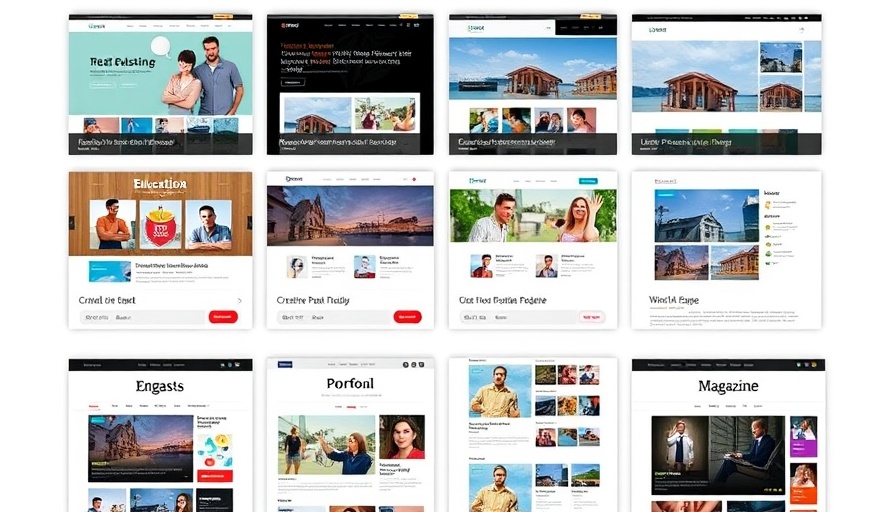
The Template Trap: Why Websites Are Becoming Carbon Copies
The current state of web design brings to light an interesting paradox. Platforms like Shopify, Squarespace, and Wix have indeed made creating websites remarkably simple. Yet, in doing so, they risk turning the internet into a bland sea of cookie-cutter designs. This reliance on templates is so pervasive that it has stunted both creativity and uniqueness, pushing us towards a homogenized web experience. For franchisors, this is a missed opportunity to stand out and establish a strong brand identity.
Understanding the “Modern” Template Aesthetic
When a franchisor seeks to develop a website, the contemporary expectation is for something that looks clean and modern. But what does that even mean in 2025? The shortcut answers often translate to a “site like this”—all too often leading to bland designs characterized by pastel backgrounds and interchangeable icons. Instead of pushing for innovation, the market has defaulted to a series of standardized choices that lack personality and resonance with potential customers.
Operational Efficiency vs. Brand Identity
For franchisors focused on operational efficiency and brand consistency, using a template may seem like a pragmatic choice. However, templates can inadvertently foster a lack of distinctiveness. The risks here are not just aesthetic; they can have real implications for customer engagement and brand loyalty. What’s vital to remember is that your website is often the first touchpoint for potential franchisees. An uninspired design can send the message that your brand is uninspired.
AI’s Role in Shaping Design Expectations
Interestingly, the blame placed on AI tools like ChatGPT for stripping design originality deserves a closer look. AI doesn’t create from thin air; instead, it reflects the abundance of template-based content it has been trained on. Franchisors should take note—if they feed AI a diet of cookie-cutter templates, it will produce outputs that echo this uniformity. To foster creativity, franchise brands must emphasize authentic, engaging designs that reflect their true essence.
Strategies for Creative Differentiation
So how can franchisors break away from the mold and leverage their unique brand identities? Consider these actionable insights:
1. **Embrace Originality**: Invest time in custom design elements that reflect your brand’s individuality. Unique color schemes, custom illustrations, or unique layouts can make a significant difference.
2. **User-Centric Design**: Engage with your franchisees and customers to understand what resonates with them. A website that reflects the needs and aspirations of its users is more likely to engage and convert.
3. **Educate and Uplift**: Train franchisees on the importance of originality in branding and equip them with tools that encourage creativity rather than uniformity.
Conclusion: Charting a Unique Course in a Sea of Sameness
The challenge of navigating modern web design for franchisors is immense, but rewarding. As they work to enhance operational excellence and brand consistency, it is crucial to remember that maintaining a unique identity online can significantly impact performance metrics. Let’s shift the narrative from templates to transformation—fostering a culture of innovation across every franchise location.
By breaking free from template-driven norms and encouraging creativity, franchisors can instill a lasting impression that speaks volumes to potential franchisees and customers. Embrace each opportunity to make your mark—and let your web presence be a true reflection of your brand’s personality.
 Add Row
Add Row  Add
Add 




Write A Comment